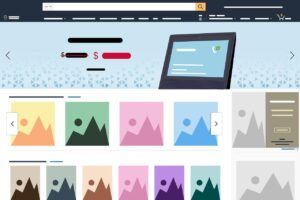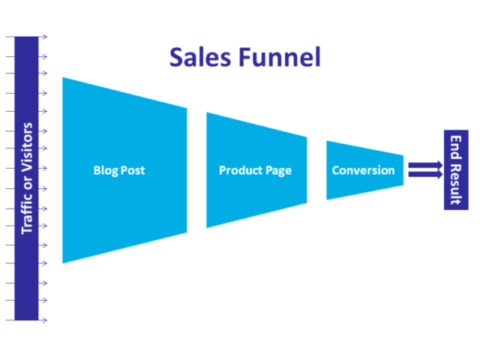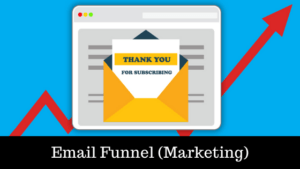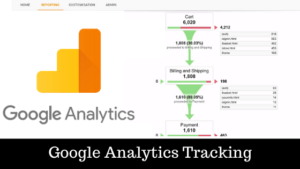When I delved into the realm of website building, I encountered a term that intrigued me: the Funnel in Digital Marketing.
As I delved deeper into internet marketing, particularly affiliate marketing, the concept of the Funnel began to unfold. I realized that there might be others in a similar position, seeking clarity on this subject.
To shed light on the topic, I decided to share my findings. My aim is to provide clear and concise information, especially for those new to the world of internet marketing.
In this article, we will explore the ins and outs of the Funnel in Digital Marketing, unraveling its workings. By the end, you will have a comprehensive understanding of funnel marketing in the digital realm.
Let’s embark on this journey by starting with an offline world example and gradually transitioning to the online domain. We will also discuss practical examples and tools to effectively track and analyze digital marketing funnels.
What is Funnel in Marketing – Offline World Example

Let’s start with a brick & mortar type of business first.
This will be a good example to visualize the marketing funnel so it will help to understand it in the online world as well.
Imagine a guy walks into the store because of some reason (that could be anything from the smell coming out from the store, through an interesting offer he sees in the window, to a nice lady behind the desk)
He comes closer because of this interesting reason and a store manager approaches him with a question, so they start to talk.
They talk about the specific item more in detail and eventually, this visitor goes to the cashier to check out and to make the purchase (probably with this nice lady).
He became a customer.
Now, what is that micro-story about?
This is a purchase procedure.
In other words, these are set of little steps (or actions) towards the purchase.
And that is called the Funnel.
The business owner starts to realize that they can increase the conversion by improving some of those steps above.
Let’s say they put a banner outside of the store.
They install a carpet; they make sure that the customer feels fine inside the store.
In order to improve these little steps, they had to break down the behavior of the visitor from the first moment he walks to the store.
They analyze the behavior by breaking it down into what is today called a Funnel.
A Funnel in the Online World

In principle, it is the same in the online world as well.
Every website owner (or an online business owner) wants to have a large number of visitors. That makes sense, right?
This is the first step, but without conversion, there is no revenue.
So he or she wants to convert as many visitors to customers as possible.
How to do that?
For example:
- By creating content that is engaging
- By offering some useful information (or bonuses)
The good thing in the online world is that this procedure (or the little steps) is much better trackable than in the brick-and-mortar store.
In other words, the website owner can analyze these steps much easier.
Another advantage is that he does not need to be in that store all the time since there are tools that help him to analyze the movements of visitors.
But we will talk about that in a minute.
Two Basic Business Categories
For the sake of explanation let’s assume there are 2 basic business categories (or websites).
- Direct Business – It can be an e-commerce page or website like Amazon. People go to Amazon most likely because of one intention and that is to buy stuff.
- Indirect Business – Websites that profit from affiliate marketing. These websites try to help the visitor first; offer him a solution or give advice.
Then it is up to the visitor to click on the link and in the end, make a purchase.
We are going to focus on the 2nd model (affiliate marketing), but just using both examples we might better understand the Funnel.
So the important questions would be:
How to create an engaging website?
A Website with a good user experience educates people, and offers help, and recommendation.
Regardless of the business type, we can always relate to the image below.

On the left-hand side of the funnel, we have traffic.
That traffic comes from many sources. It could be organic, Facebook, YouTube, paying ads, emails, using referral marketing, or other websites as well.
At the end of the funnel is an end result:
- either the purchase of a product
- or click on an affiliate link (depending on what kind of business we are).
Now let’s take a look at the steps in-between.
How Does Funnel in Digital Marketing Work?
We have a visitor at our site and we don’t want to lose him.
That is why we have a post or video that is interesting enough so he stays or clicks to a different post/product within our website.
We may even have a pop-up window (as you have seen already 🙂 ) where we have something special for our visitors.
If he signs up, it means that he will receive several interesting emails.
This particular way is called an email funnel.
Blog post –> Email sign up -> Email funnel
In the Direct Business type, the funnel looks a little bit different since the end result is the profit or purchase, already.
Blog post -> Product page -> Purchase
We see that both funnels have 3 steps.
It is possible to have more steps, but it has been proven that an easier funnel (meaning fewer steps) is more effective.
More steps just mean more places where visitors can drop off.
Tools and Components – Email Funnel

We have outlined the step of how the customer walks into the store or visitor lands on a website.
Well, in order to analyze the funnel we need to think about what we want to achieve, and what data we want to look at.
With that being said, first of all, the entire funnel is created in our mind as a thought – that means an idea.
We want to have that idea related to the post, video, or presentation. Then we need to know what our end result is.
Is it a purchase, or is it a click on the affiliate link?
Now we need to fill out the gap between the idea and end result.
- We need to have content on our site. It can be a post or video.
- Lead Magnet – In order to ask the visitor for an email, we want to give him something in exchange.
- We want to send out an email to our visitors with some valuable info. If we have tons of visitors we are going to need an Autoresponder.
- Now it goes into the secondary funnel – email marketing.
The secondary funnel in a nutshell is again a process of the email campaign.
Once we have a list of emails, we want to build a relationship, give value, or help our prospectors.
There is a dedicated explaining how email marketing works, but just let’s just briefly mention the email sequence:
- 1st email contains an introduction and also there is no harm if you offer them some kind of bonus
- 2nd email is to be sent 1 day later with valuable information.
- 3rd email is to be sent 3 days later. Write about yourself – a short story
- 4th email to be sent another 3 days later saying “Hey, here is a bonus for you”
- 5th email to be sent 3 days later with a promotional offer
- 6th email to be sent 1 day later with industry insight and by promotion
- 7th email is to be sent a week later. Here you want to connect on a personal level and it should contain valuable information as well.
This is just an example of an email funnel.
You can, of course, change the sequence of emails, but try to send them regularly at the beginning and then less often.
But make sure you do not have a 7 days gap between the two emails.
Tracking

Tracking is very important.
The easiest way is to use Google Analytics.
In google analytics, you see exact data on where the visitor is coming from, and on which page he landed. Where he dropped off the path and so on.
If you, for example, see that many visitors leaving a certain page, again and again, you want to look at that page on your website and figured out what might be wrong.
On the other hand, if people are “gathering” at one page – you want to leverage that and maybe try to do an ad for that particular post.
Another tool is an Email Autoresponder.
We have mentioned the email funnel/marketing already.
But it is important to highlight that many companies offering these email automation tools have also analytic reports included.
There are many services offering such autoresponders, for example, Aweber.
As a side note, Aweber is not for free.
But, you don’t have to invest in such a tool yet if you do not have a budget.
Some autoresponders offer a free trial – let’s say you can use the tool for free up to 500 subscribers or so.
I think MailChimp has a free option of up to 2,000 subscribers.
When you start to see some revenue and your budget starts to grow, then go ahead and you can have a premium service.
Such investment will make your life easier and you can focus on more important things.
How Does It Help?
You may be asking, ok now I understand what the funnel is, but how does it help me?
Well again, what is our goal?
The goal is to increase the ROI or conversions, make more sales, right?
By analyzing where our customers are coming from, which page they stay on, or where they leave we can learn a lot of things.
Let’s say we have one specific post with a big percentage of visitors. We also see that a reasonable portion of them converts at the end.
The goal is to leverage that for example by creating an ad.
So more people will come to that page and that means a better conversion rate.
On the other hand, when we see that a big portion of visitors leaving a specific post, we know that we need to look at the reason why they leave and work on that specific post to fix that.
To Recap Briefly
We have learned what the funnel is.
Basically, it is the procedure of (usually) 3 steps.
Let’s do a recap based on another example:
- In the 1st stage, we have a blog post where the visitor learns what solves his problem.
For example, he has a mattress on a metal bed frame and he does not like that during the night and/or adult activities his mattress slides around. He reads our post where he finds out, that in order to prevent the sliding, he should use the non-slip pads for mattresses. - In the second stage, he goes to check some specific non-slip pads. He reads about them he checks the dimensions and so on. Eventually, he likes one and he adds it to the card.
- The last stage of this 3 steps funnel is a purchase. Or generally called also a conversion.
The bottom line is that the funnel is nothing else than just a behavior of the visitor – tracked from the stage he comes to our website to the last ideal stage of purchasing.
Hopefully, this post had shed light on the definition of the funnel in marketing is.
If there is anything unclear, or you have any comments, please let me know below and I will be more than happy to answer your question, hopefully within 24 hours.
In case you are interested in affiliate marketing, and you have not found a platform that offers step-by-step training I can recommend reading the following post.
